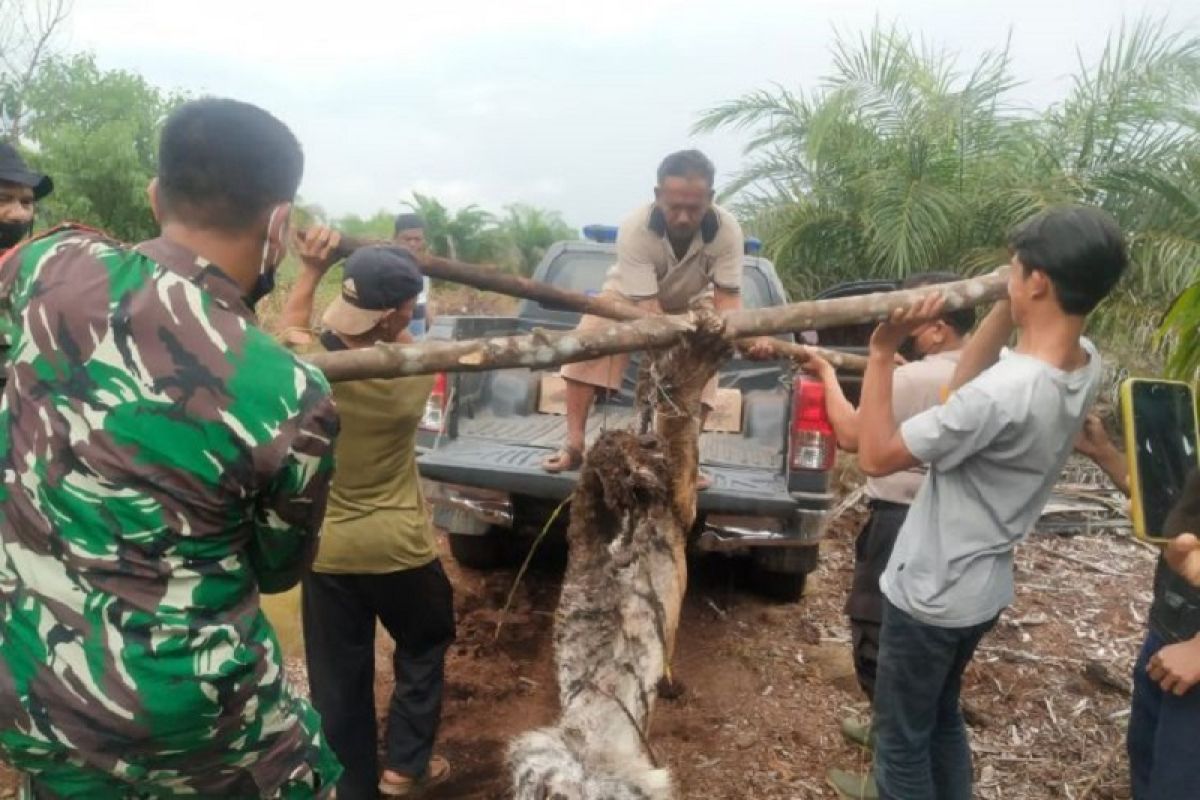Pekanbaru, Riau (ANTARA) - A Sumatran tiger (Panthera tigris sumatrae) was found dead in Tanjung Leban Village, Bengkalis District, Riau Province, with its left front leg ensnared in a wire trap.
Acting Head of Riau's Natural Resources Conservation Agency (BBKSDA) Fifin Arfiana Jogasara said here on Sunday that the agency has received information from a local villager who worked in a field close to the location.
"The farmer reported his finding to Bukit Batu Police, which was then forwarded the report to the Riau BBKSDA. A team of the agency has been dispatched to the location for initial identification," Jogasara said.
According to the team, the tiger corpse was found in a cultivated land within the convertible production forest area (HPK), some 21.85 kilometers away from the Bukit Batu Wildlife Conservation.
"The female tiger was evacuated to Pekanbaru for a necropsy to determine the causes of her death and estimate the time of the death," she said.
She called on the public not to place traps for any reason because it would harm animals, including protected species, saying that it violated Law No. 5/1990 on Conservation of Natural Resource and Its Ecosystem.
"Those who intentionally violate the law may face a maximum penalty of five years in prison and maximum fine of Rp100 million while those who neglect the law may face a maximum penalty of one year in prison and maximum fine of Rp50 million," Jogasara said.
ANTARA noted that in Indonesia, Sumatran tigers were the only surviving tiger species, as the country had already lost two sub-species of tigers to extinction: the Bali tiger that became extinct in 1937 and the Javan tiger in the 1970s.
Sumatran tigers, the smallest of all tiger species, are currently critically endangered and only found on Sumatra Island, Indonesia’s second-largest island.
The tigers are on the brink of extinction owing to deforestation, poaching, and conflicts between wild animals and local people owing to their dwindling habitats.
The exact figure of Sumatran tigers left in the wild is ambiguous, though the latest estimates range, from under 300 to possibly 500 at 27 locations, including in the Kerinci Seblat National Park, Tesso Nilo Park, and Gunung Leuser National Park.



